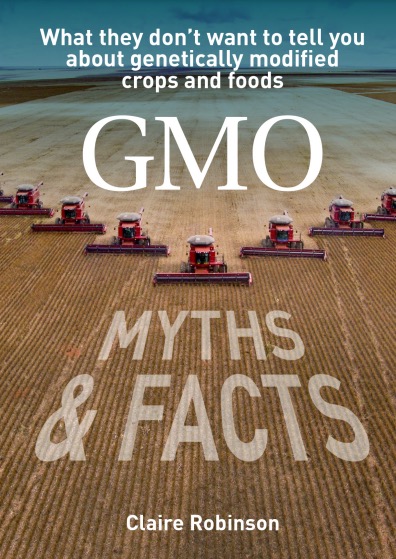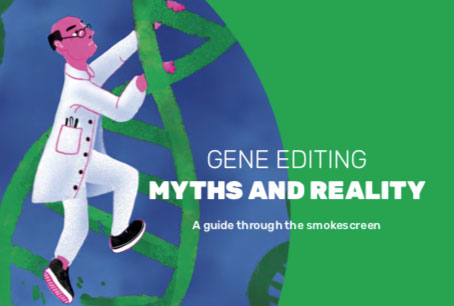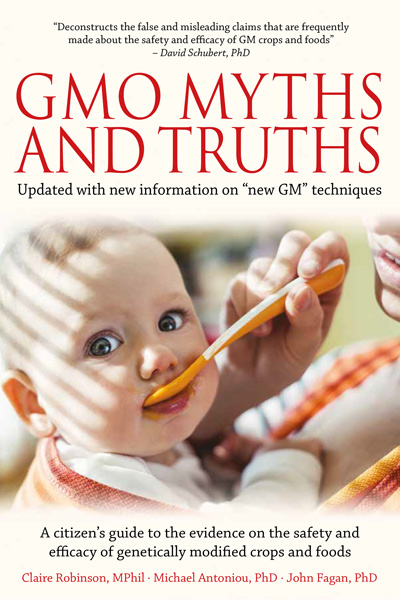Stacking Bt traits offers little or no protection
Two new studies show problems with GM Bt insecticidal crops.
In the first study (abstract below), US researchers found that the Western corn rootworm pest is resistant to multiple Bt toxins. The study also found that cross-resistance is prevalent and evolves rapidly – in other words, exposure to one type of Bt toxin causes the pest to become resistant to that Bt toxin and also to other Bt toxins to which it has not been exposed.
The findings show that stacking (“pyramiding”) multiple Bt toxins in one crop in the hope that resistance will be delayed or avoided is a doomed strategy.
The authors say that their finding “raises concerns about the long-term durability of Bt crops for management of some insect pests”. In other words, GM Bt technology is not sustainable.
In the second study below, Bt cotton was found to inhibit the development of arbuscular mycorrhizal fungi (AMF). AMF perform many helpful functions in plant growth and health – for example, enhancing nutrient uptake and suppressing diseases.
1. Broad-spectrum resistance to Bacillus thuringiensis toxins by western corn rootworm (Diabrotica virgifera virgifera)
2. Evidences of inhibited arbuscular mycorrhizal fungal development and colonization in multiple lines of Bt cotton
—
1. Broad-spectrum resistance to Bacillus thuringiensis toxins by western corn rootworm (Diabrotica virgifera virgifera)
Jakka, S. R., Shrestha, R. B., & Gassmann, A. J. (2016). Scientific Reports 6.
http://www.nature.com/articles/srep27860
Abstract
The evolution of resistance and cross-resistance threaten the sustainability of genetically engineered crops that produce insecticidal toxins derived from the bacterium Bacillus thuringiensis (Bt). Western corn rootworm, Diabrotica virgifera virgifera LeConte, is a serious pest of maize and has been managed with Bt maize since 2003. We conducted laboratory bioassays with maize hybrids producing Bt toxins Cry3Bb1, mCry3A, eCry3.1Ab, and Cry34/35Ab1, which represent all commercialized Bt toxins for management of western corn rootworm. We tested populations from fields where severe injury to Cry3Bb1 maize was observed, and populations that had never been exposed to Bt maize. Consistent with past studies, bioassays indicated that field populations were resistant to Cry3Bb1 maize and mCry3A maize, and that cross-resistance was present between these two types of Bt maize. Additionally, bioassays revealed resistance to eCry3.1Ab maize and cross-resistance among Cry3Bb1, mCry3A and eCry3.1Ab. However, no resistance or cross-resistance was detected for Cry34/35Ab1 maize. This broad-spectrum resistance illustrates the potential for insect pests to develop resistance rapidly to multiple Bt toxins when structural similarities are present among toxins, and raises concerns about the long-term durability of Bt crops for management of some insect pests.
—
2. Evidences of inhibited arbuscular mycorrhizal fungal development and colonization in multiple lines of Bt cotton
Chen, X. H., Wang, F. L., Zhang, R., Ji, L. L., Yang, Z. L., Lin, H., & Zhao, B. (2016). Agriculture, Ecosystems & Environment, 230, 169-176.
http://www.sciencedirect.com/science/article/pii/S0167880916302547
Highlights
• Bt cotton inhibited spore germination and pre-symbiotic hyphal differentiation
• Appressorium number decreased on Bt roots
• Root colonization intensity and arbuscule abundance decreased within Bt roots
• More collapsed arbuscules were observed in Bt roots
• Interference of signal perception or Bt toxin toxicity directly impact on AM fungi
Abstract
A “sandwich system” was used to investigate the effect of transgenic Bacillus thuringiensis (Bt) cotton (Gossypium hirsutum L.) on early stages of arbuscular mycorrhizal (AM) fungal life cycle. Spore germination and pre-symbiotic hyphal differentiation of AM fungus Rhizophagus irregularis were decreased in the rhizosphere of transgenic Bt cotton isolines (Jin26, GK12 and Jin44) compared with in that of their corresponding parental non-transgenic isolines (Jin7, Si3 and Ji492); and the appressorium number, colonization intensity and arbuscule abundance were lower in Bt plant roots. More collapsed arbuscules were also observed in Bt roots. The results of statistical analysis demonstrate that Bt-trait significantly contributes to the inhibition of pre-symbiotic development and AM fungal colonization, which might be attributed to either Bt toxin toxicity or interference of signal perception between AM fungi and the hosts. The specific mechanism requires further study.










